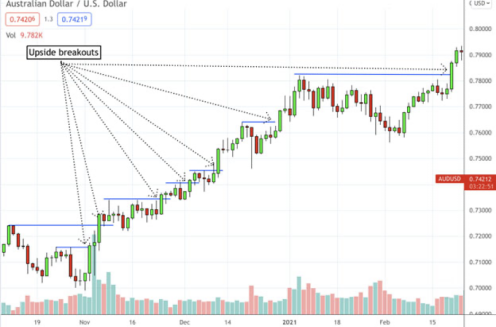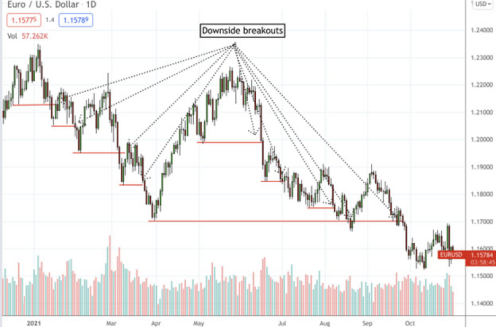The Importance of Breakouts
If it weren’t for support and resistance, what other technical reference points do you have that provides some sort of historical precedence on a chart? Not much. That’s why support and resistance areas are so critical. They tell you where the bulls or bears bought and sold; where either side determined a price threshold at a given time.
Breakouts indicate critical action areas
Next to support and resistance, you have price breakouts: areas where historical support and resistance have been challenged and breached. If support marks some kind of an “oversold” limit, then a breakout (or breakdown) below support indicates that bullish and sentiment may no longer hold. The opposite is true of an upside breakout through resistance; the bears will have to cover or get out of the way.
An upside breakout indicates that “buying pressure” might have overwhelmed “selling pressure” (for however long it lasts).

A downside breakout tells you that selling pressure might have overwhelmed buying pressure.

The important thing to note here is that trends move forward along a series of breakouts. Breakouts mark bullish or bearish “actions” along critical price areas. Typically, one side will win out over the other over the short-term or long-term.
Breakouts do have limitations, however. Namely, where price goes after a breakout—whether it’s going to fail and reverse, widen the support and resistance range before pulling back, or establish a new trend or continue an existing one—is very difficult to assess from a strictly technical point of view. This is where it helps to follow the fundamentals of the asset you’re trading.
Takeaway
Breakouts signal trading opportunities, whether bullish or bearish. What’s important about these opportunities is that they can be anticipated by keeping a close eye on support and resistance levels.
The outcome of this bull vs bear showdown might not be predictable but you can at least know where the action is likely to take place. With proper risk management and position sizing, you might be able to gain potential upside exposure while managing your downside risk.